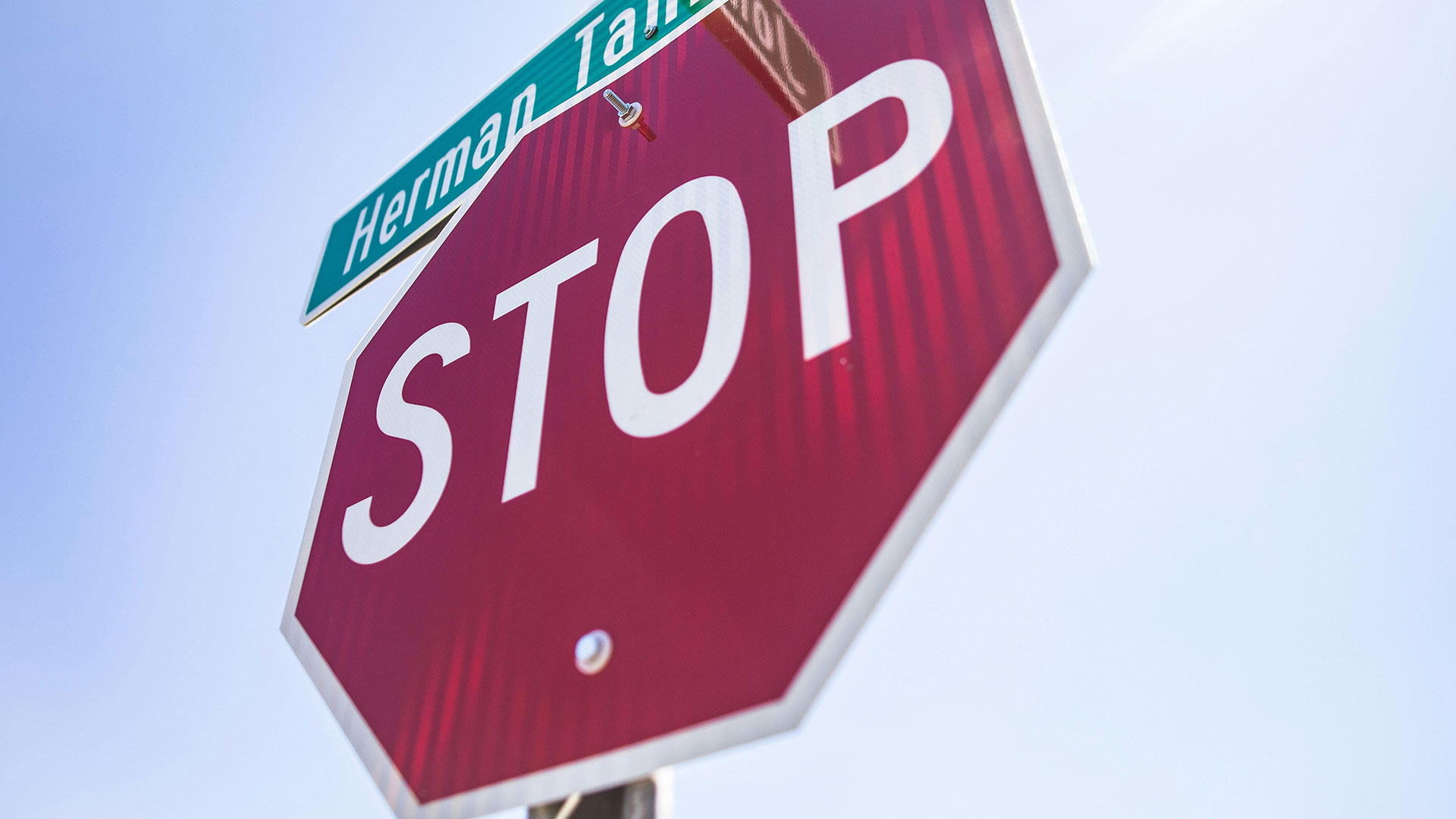November 1, 2024
Intuitively, you might expect a stop sign to be an effective traffic calming tool—after all, asking drivers to slow to a stop should reduce their overall speed, right?
Traffic studies actually indicate the opposite! Many studies have shown that while stop signs have a place and purpose—namely, indicating who has the right-of-way—they are not effective at slowing driver speeds.
Why is this the case? The Portland Bureau of Transportation outlines a few ways drivers may compensate for the felt inconvenience of coming to a stop sign:
1. Faster speeds in between stop signs. After stopping, many drivers increase their speed between signs to make up for the time they lost stopping.
2. Stop sign overload. Installing too many stop signs could cause drivers to ignore the signs altogether, especially if they are placed in an area those drivers travel through often and don’t expect cross-traffic.

Many studies have shown that while stop signs have a place and purpose—namely, indicating who has the right-of-way—they are not effective at slowing driver speeds.
For these reasons, attempting to use stop signs to control speeding can actually lead to safety issues due to driver acceleration and intentional violation of the sign. The Manual on Uniform Traffic Control Devices (MUTCD) puts it plainly: “YIELD or STOP signs shall not be used for speed control” (Section 2B.06).
So, what’s a better alternative? Consider the following traffic calming measures, which have a better track record for slowing speeds through neighborhoods:
- Repurpose “auto-owned” space. Medians, curb extensions, and road diets are all techniques that reduce space designated for cars, which can encourage slower speeds. This reclaimed space can be used for landscaping, parking, pedestrian amenities, and more.
- Consider roundabouts at intersections. Single-lane roundabouts reduce conflict points and create a calm, steady flow of traffic.
- Install raised pedestrian crossings or raised intersections. Data collected as part of San Francisco Municipal Transportation Agency (SFMTA)’s Traffic Calming Program supports that raised crosswalks lead to safer speeds. For example, on a block of John Muir Boulevard where three sequential raised crosswalks were installed, the 85th percentile speeds fell from 43 miles per hour to 29 miles per hour.
- Use visual cues to make the roadway appear narrower. Trees as well as striping tighter curve radii or on-street parking lanes can make the driver feel more restricted. As a result, drivers naturally reduce their speed.
- Install vertical measures, such as speed humps, that require vehicles to slow down. It’s important to note, however, that speed humps designed too abruptly may result in the same issues as stop signs: causing drivers to speed up to compensate for braking. Speed humps that are designed for drivers to travel over at the speed of the road tend to see the best results. For example, we’re working with Toole Design to analyze before/after speed data for speed humps in Arlington County and seeing reduction in speeding of up to 41% on 20mph streets.
Read more about traffic calming techniques, and examples of cities putting them into action, here on our website.
—
Bust more transportation myths with us! You can also read about:
